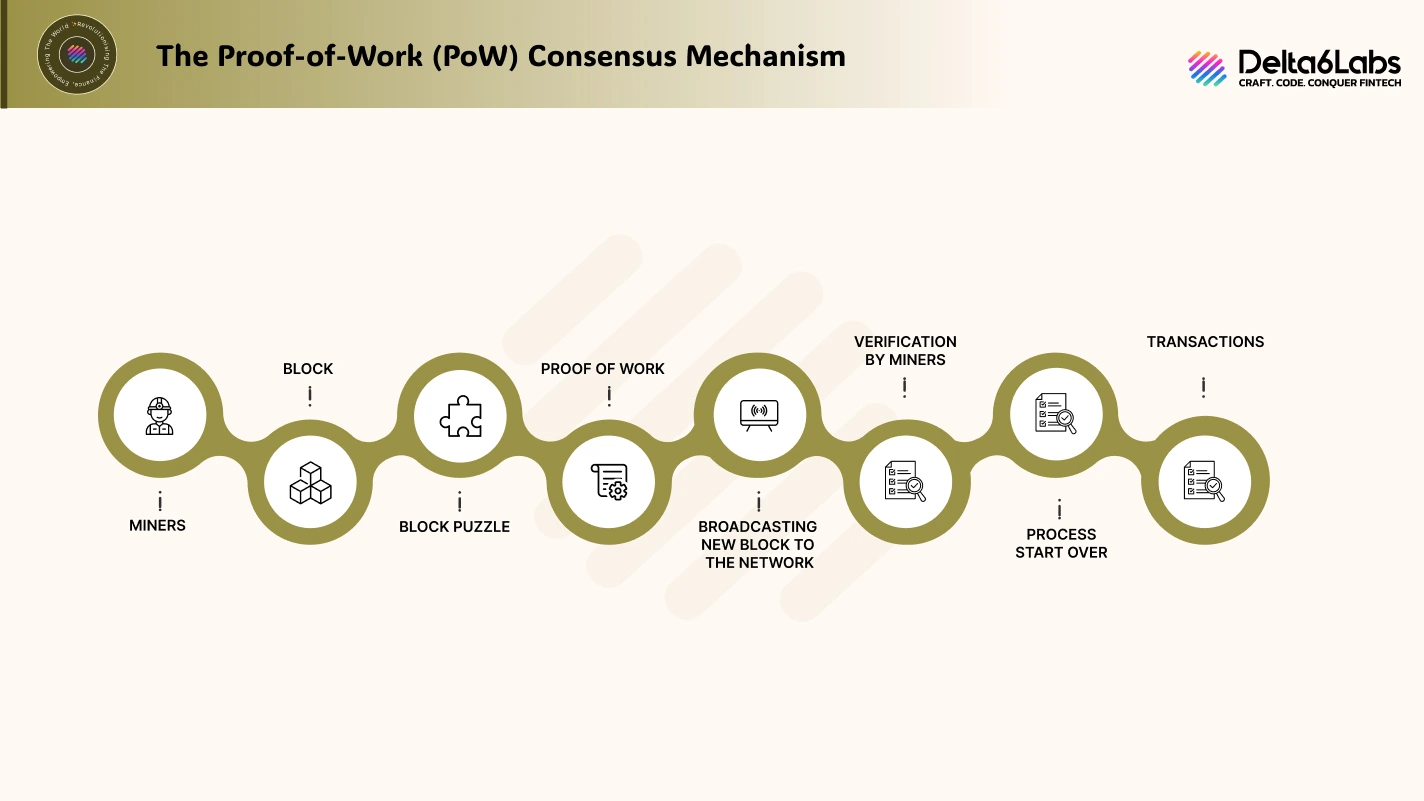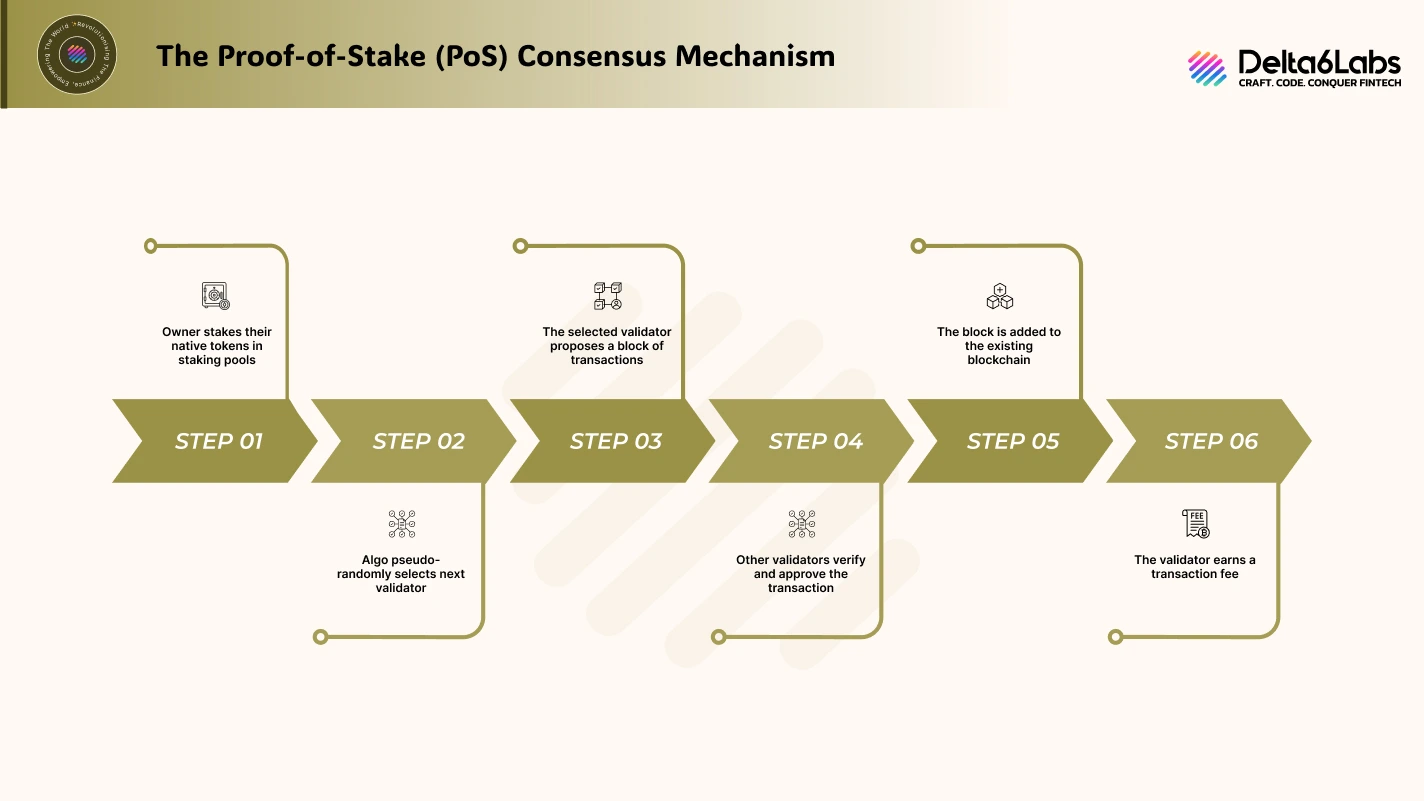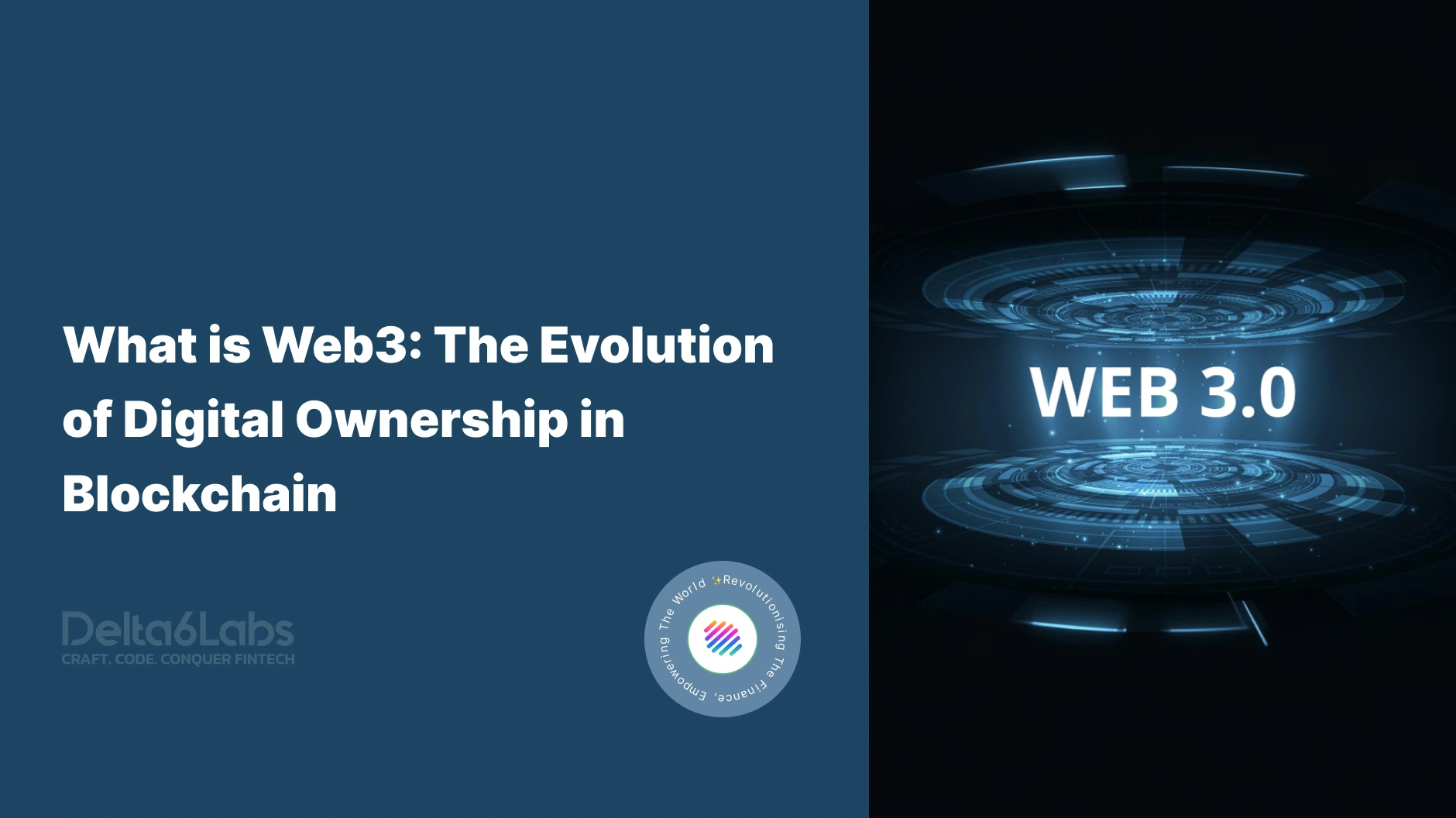Eco-Friendly Blockchains and The Road To A Sustainable Future
Table of Contents
Blockchain technology has not become the centre of attraction only for good reasons; it also has some major drawbacks, one of them being its high energy consumption. Environmentalists and climate change activists have raised their concerns about the higher energy consumption of blockchain technology. Higher CO2 emissions have also raised many eyebrows against the use of blockchain technology. These concerns are not vague; the data also suggest the same. The annual CO2 emission of blockchain technology is shockingly very high and contributes around 0.3% to the total emissions in the world.
As per the report of the International Energy Agency (IEA), cryptocurrency mining consumes 162 TWh of electricity annually, which is 0.5% of the annual demand of the world. The impact of Bitcoin mining is not limited to CO2 emissions only. As per the journal published by Cell Reports Sustainability, water footprints of crypto mining are also alarmingly very high. The machines that are used for mining the cryptocurrency need water to cool down. The annual water footprint of Bitcoin mining is equivalent to 660,000 Olympic swimming pools. This report has taken the timeline of January 2020 to December 2021 into consideration. This implies that the Bitcoin mining process needs 800 billion litres of water annually.
Why Bitcoin Mining is an Environmental Hazard?
Bitcoins are mined with the help of a machine known as a Bitcoin miner. Such miners consume a very large amount of electricity to function. As per the Whitehouse 2022 report, annual electricity consumption for cryptocurrencies has surpassed the annual electricity demand of several countries like Argentina and Australia. In the context of sustainable development and climate change problems, this data is scary.
What is Bitcoin Mining?
In the blockchain technology context, the users who add blocks to the network are called miners. The process of adding new blocks to the network chain is called mining. To add new blocks, these miners must solve a mathematical equation or some sort of puzzle. Whoever solves the equation at the earliest will get the chance to add new blocks. The mining process is done with the help of high energy-consuming computer devices because of the high computational requirements of the blockchain validation process. Blockchain mining consumes a significant amount of energy and leaves a big amount of carbon footprint. The main reason behind the high energy consumption of blockchain mining is the consensus mechanism they use to validate blockchain transactions. Famous cryptocurrencies like Bitcoin and Ethereum (now transitioning to the PoS mechanism) use the PoW mechanism also known as the Proof of Work mechanism to validate the blockchain transactions. The PoW mechanism consumes a significantly high amount of electricity.
According to reports, till August, Bitcoin consumed around 70% of the total electricity consumed by cryptocurrencies, followed by Ethereum, which consumed 25% of the total electricity. In 2023, Ethereum switched its mechanism to Proof of Stake (PoS), which consumes relatively little electricity. Since 2023, other cryptocurrencies have also switched to the PoS consensus mechanism to lower their electricity consumption.
Proof of Work and Proof of Stake – Consensus Mechanisms
Data suggests that the PoS mechanism consumes comparatively less electricity and emits less CO2 as compared to the PoW mechanism. To understand that, we have to first understand what exactly are PoW and PoS consensus mechanisms and how they work in blockchain technology and cryptocurrency mining.
Proof of Work (PoW) Mechanism
The proof of work mechanism is a decentralized consensus mechanism used by blockchain networks to validate transactions. PoW indicates the efforts put in by the miners to solve a mathematical puzzle that is necessary to add new blocks to the blockchain network. PoW removes the intermediaries and enables secure peer-to-peer transactions.
PoW consensus mechanism also makes sure that data alteration hasn’t taken place and that the miners have executed the mining with transparency. After mining, each miner sends a broadcast to the network that a new block has been added to the network and it has been validated by the PoW mechanism.

The biggest drawback of the PoW mechanism is high electricity consumption. Bitcoin and the initial version of Ethereum employed the PoW consensus mechanism, which resulted in higher electricity consumption and very high CO2 emissions.
Proof of Stake (PoS) Mechanism
The Proof of stake mechanism works on the principle of staking. All the nodes in the network put a certain amount of cryptocurrencies as collateral to become a validator of the new block, which can fetch them rewards later on. Due to this staking policy of the PoS mechanism, fewer nodes participate to become validators. Those who wish to become a validator puts their coins at stake. This mechanism consumes comparatively less electricity than the PoW consensus mechanism because, in the PoW mechanism, the nodes have to solve a mathematical puzzle that consumes high energy, but in the case of the PoS mechanism, no such process is needed. Ethereum (Casper update), Nxt and Peercoin are some famous blockchains that use the PoS mechanism.

Proof of Stake vs Proof of Work
PoW and PoS, both the mechanisms are decentralized promoting processes. But in comparison to each other, the PoS mechanism is more decentralized because it does not provide an edge to any of the nodes by rewarding the nodes proportionally to their stakes, in the PoW mechanism this doesn’t happen.
PoS is more energy efficient than the PoW mechanism as the PoS mechanism doesn’t require the nodes to solve a mathematical puzzle to create a new block to mine a cryptocurrency such as Bitcoin.
According to a report by CCRI, the electricity consumption and carbon emissions of Ethereum have significantly come down since they transitioned to the PoS mechanism from the PoW consensus mechanism.
Why do We Need Eco-Friendly Blockchains?
We have limited resources on this blue planet as compared to its population. It will be beneficial for us and our future generations to use these resources wisely and without exploiting them. Electricity is one among these limited sources because a major share of total electricity is generated through non-renewable sources like coal and water.
Cryptocurrencies are contributing a lot to the global economy by paving the way for decentralized forms of transactions and data sharing. Blockchain technology has revolutionized the DeFi landscape by providing a distributed ledger of transactions that are more transparent and do not need any third party. But the traditional blockchains are consuming such large amounts of electricity that it is surpassing the electricity needs of entire countries such as Poland or Switzerland. According to some reports, the energy consumed by cryptocurrency mining in 2022 was more than double the energy needed by Switzerland.
Due to the lack of any regulatory framework for eco-friendly blockchains, the mining companies do not reveal their location and their energy consumption is not recorded. This leads to a lack of electricity for the residents and other manufacturing units in the region. Crypto mining machines consume large amounts of electricity that disturb the load management capacity of transformers, and that leads to the failure of the whole circuit and frequent power cuts. Due to the overheating of the transformers, fire risk also increases. Many incidents of blackouts and equipment failure have been reported in areas where illegal mining of cryptocurrency has taken place.
Because of the mentioned reasons, green blockchains or eco-friendly blockchains are the need of the hour. If companies start developing green blockchains, it will reduce carbon emissions and water footprints significantly.
The Role of Regulatory Framework & Corporate Responsibility
The reason behind excessive energy consumption by cryptocurrency mining companies is the lack of a regulatory framework. There is no central authority for the crypto community, and different countries have their own set of rules and policies regarding crypto mining. Some countries have declared them illegal also. In the absence of a regulatory framework and legal rules, companies are exploiting non-renewable resources for their benefit.
Since environmentalists and climate change activists have turned their focus towards carbon emissions and energy consumption by cryptocurrency mining companies, many BC companies have shifted from traditional blockchain development to green blockchain development.
Sustainable development goals, also known as SDGs, are among the few frameworks that blockchain solution companies use to define their sustainability targets. SDGs have 17 high-level goals and 231 indicators that help countries set their target for sustainable development. However, it is not easy to calculate the direct impact of blockchain on SDGs because indicators of SDGs do not align with the requirements of blockchain development. Other than SDGs, the IPCC also defines a set of rules for net zero emissions and to mitigate climate change. Blockchain solution companies have been advised to use sensors and equipment that reduce carbon emissions and ensure accountable use of energy.
One of the ways to reduce electricity consumption is to set accountability for the blockchain companies, and in case of a breach, the company should be fined heavily and strictly. Another way of promoting eco-friendly blockchains is by providing rewards for following sustainability rules. The companies that will adhere to the sustainable ways of developing blockchains and reduce their energy consumption will be rewarded. Awareness programmes should be conducted to make companies and miners aware of corporate responsibility towards the environment and sustainable future.
Green Blockchain Cryptocurrencies
The craze for developing green blockchains has been increasing since 2021 when Elon Musk (The Owner of Tesla) announced that the company would not accept Bitcoin as payment anymore. The reason behind this announcement from the chief of Tesla and SpaceX was unaccountable and extremely high energy consumption by Bitcoin mining companies.
In late 2022, Ethereum changed its consensus mechanism from PoW to PoS to reduce its annual electricity consumption and carbon emissions. In today’s world, sustainability is the need of the hour, and that’s why various companies have started to develop green blockchains and cryptocurrencies based on these blockchains.
These green blockchain cryptocurrencies have provided a less energy-consuming, less carbon-emitting alternative to the traditional blockchains that use the Proof of Work consensus mechanism. These cryptocurrencies are doing less damage to the planet and are more efficient as compared to traditional blockchain cryptocurrencies.
Some of the famous green blockchain cryptocurrencies are
- Cardano
- Tezos
- Chia
- Polkadot
- Nano
- Solana
- Ethereum
- Ripple
- Bitgreen
- IOTA
Green Blockchain Support Initiatives
Various green blockchain support initiatives have been started by different groups and climate change mitigation communities to promote the development of eco-friendly blockchains. Some of them are:
Solarcoin
Solarcoin is an independent cryptocurrency that promotes the generation of solar energy by rewarding Solarcoins. It uses the PoA (Proof or Authority) mechanism to validate the addition of new blocks, which Is another less energy-consuming mechanism than the PoW. Solar energy is a renewable source of energy and is used to generate electricity. For crypto mining, sun-based electricity can be used to reduce carbon emissions.
The Green Digital Finance Alliance
This is a charitable foundation that supports environment-friendly initiatives around the world to mitigate climate change and reduce global carbon emissions. Eco-Friendly blockchains are also supported by the Green Digital Finance Alliance.
GreenTrust
This is a blockchain development company that uses a carbon-neutral system to achieve carbon neutrality by the end of the fifth decade of the century.
Conclusion
Blockchain technology has changed the finance sector and has challenged the traditional ways of currency exchange. Blockchain technology has provided anonymity, transparency, better efficiency, security and accessibility to users all around the globe. It is projected to become a USD 1000 billion industry by 2035.
But with advantages comes some challenges as well. One of the most discussed and concerning challenges that the crypto industry is facing is the environmental challenges of the crypto mining process.
The traditional cryptocurrency mining process works on the PoW consensus mechanism, which consumes a significant amount of electricity and emits large amounts of CO2. Many climate change experts have cited this unaccounted usage of renewable energy as hazardous and have asked such companies to switch to more energy-efficient processes like the PoS and PoA mechanisms.
These types of blockchains that work on the PoS and PoA mechanisms are called green blockchains or eco-friendly blockchains. These blockchain solution companies are promoted by various green blockchain initiatives such as Solarcoin, GreenTrust and the Green Digital Finance Alliance.
Because of the efforts of these initiatives, many blockchain companies have switched to less energy-consuming mechanisms. Some of the famous green blockchain cryptocurrencies are Cardano, Tezos, Ethereum and Nano.
If blockchain development companies adhere to their corporate responsibilities, eco-friendly blockchains will rise to new heights, and we will certainly take a positive step towards a sustainable future.
Frequently Asked Questions
Disclaimer:
The information on this blog is for knowledge purposes only. The content provided is subject to updates, completion, verification, and amendments, which may result in significant changes.
Nothing in this blog is intended to serve as legal, tax, securities, or investment advice of any investment or a solicitation for any product or service.






